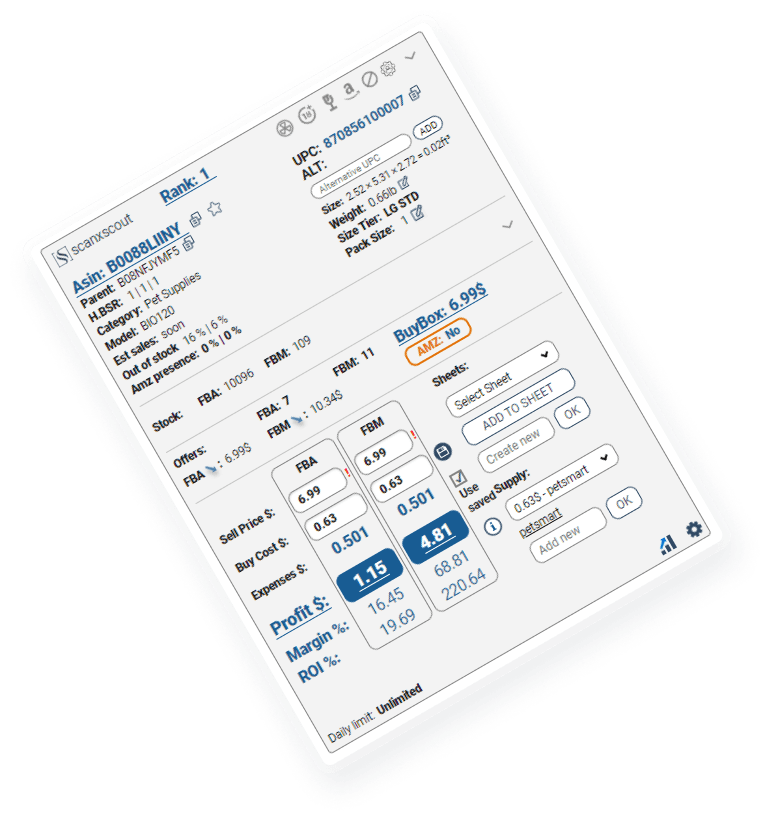Introduction
Selling on Amazon can be a lucrative venture, but it’s essential to understand the costs involved. From listing fees to fulfillment expenses, the cost structure can vary depending on various factors. In this comprehensive guide, we’ll delve into the intricacies of selling on Amazon and explore the expenses associated with it.
Understanding the Cost Structure
Initial Setup Costs
Setting up your Amazon seller account is the first step towards selling on the platform. While individual accounts are free, professional accounts come with a monthly subscription fee.
Creating a Seller Account
To start selling on Amazon, you’ll need to sign up for a seller account. Whether you opt for an individual or a professional plan, there are associated costs.
Product Listing Fees
Amazon charges sellers for listing their products on the platform. Understanding these fees is crucial for budgeting your selling expenses effectively.
Listing Products
Each product you list on Amazon incurs a listing fee. This fee may vary based on the category and type of product.
Fulfillment Costs
Whether you fulfill orders yourself or opt for Amazon’s fulfillment services, there are costs involved in getting your products to customers.
Fulfillment by Amazon (FBA) Fees
If you choose FBA, Amazon handles storage, packing, and shipping of your products. However, these services come with fulfillment fees.
Calculating Selling Fees
Referral Fees
Amazon charges referral fees for each product sold on its platform. These fees are calculated as a percentage of the total sale price.
Understanding Referral Fees
Referral fees vary across different categories and can significantly impact your overall selling costs.
Variable Closing Fees
In addition to referral fees, sellers may incur variable closing fees based on the product category.
Variable Closing Fees Explained
These fees, often overlooked, can add up, especially for high-volume sellers.
Additional Expenses to Consider
Advertising Costs
To increase visibility and sales, many sellers invest in Amazon’s advertising services.
Sponsored Product Ads
Running sponsored product ads on Amazon can drive traffic to your listings but come with a cost.
Inventory Management Costs
Managing inventory efficiently is crucial for minimizing costs and maximizing profits.
Inventory Storage Fees
If you store products in Amazon’s warehouses, you’ll be charged for storage space based on volume and duration.
Shipping and Packaging Expenses
Shipping products to Amazon’s fulfillment centers or directly to customers entails shipping and packaging costs.
Optimizing Shipping Costs
Exploring different shipping options and negotiating rates can help reduce overall expenses.
Conclusion
Selling on Amazon offers immense opportunities for businesses of all sizes, but it’s essential to understand the associated costs. By carefully analyzing the cost structure and optimizing expenses, sellers can maximize their profits and succeed in the competitive Amazon marketplace.
FAQs
- What are the upfront costs of selling on Amazon? Setting up a seller account and listing products entail initial expenses.
- How are Amazon referral fees calculated? Referral fees are calculated as a percentage of the total sale price and vary by category.
- Are there any hidden costs associated with selling on Amazon? While Amazon is transparent about its fees, sellers should be aware of potential variable closing fees and storage costs.
- Can I control my selling expenses on Amazon? Yes, by monitoring your sales performance, optimizing advertising spend, and managing inventory efficiently, you can control your expenses effectively.
- What happens if I can’t afford Amazon’s fulfillment fees? Sellers have the option to fulfill orders themselves, although utilizing Amazon’s fulfillment services can streamline operations.
- How can I maximize my profits while selling on Amazon? By conducting thorough market research, optimizing product listings, and implementing cost-saving strategies, sellers can enhance their profitability on the platform.


 137
137